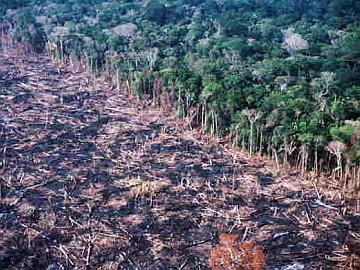More than 70% of deforestation in the Amazon becomes waste.

News04 de September de 2025
No furniture, doors or broom handles. Out of every ten trees cut down in the Amazon region, seven end up in the trash. According to a study by the National Institute of Amazonian Research (INPA), most of the wood is simply discarded as waste.
The main problem is the processing of this wood. Done almost entirely by hand and with low technology, only 30% of the logs are utilized. This portion represents the most valuable part of the tree.
The rest, in the form of sawdust and leftovers, is discarded. According to Niro Higuchi, coordinator of the INPA research, it is essential to improve the yield of the forest. Simply stopping deforestation is not enough, for example.
The researcher also points out another reason for the low utilization of wood: it is very cheap in the local market. "You can buy a hectare of forest for R$40," he told Folha.
According to the Association of Wood Exporting Industries of the State of Pará (AIMEX), it is not quite like that. The average price of a tree varies between R$90 and R$360, depending on the species.
"Wood here in the Amazon is really cheap. But it's not just that. It is exploited in a disorganized manner," warns Rosana Costa, agronomist at the Amazon Environmental Research Institute (IPAM).
The disorganization of this exploitation is not just a problem in large cities, which turn trees into urban waste. It also affects riverside communities - after all, some settlements embedded in the forest survive on wood processing.
In these communities, all waste is dumped into the rivers. "In the water, sawdust can ferment and release the chemicals that were applied to the trunk. This causes the death of the river, as happened in the Trairão River," warns Rosana.
INPA's goal is to reverse this percentage in five years, starting to utilize 70% of the felled wood. Increased productivity occurs in two stages.
In the first stage, the technique and technology of the timber industry are improved, such as cutting methods and blades used.
Next, it's the turn of the waste. Sawdust generates energy in thermal power plants. And the leftovers can finally become furniture, doors or broom handles.
For Niro, the results in the laboratory were encouraging. As a result, an agreement has already been signed with a sawmill in Itacoatiara (metropolitan region of Manaus), and the project implementation should start by the end of the month.
Source: http://www.jornale.com.br
Lippel promotes forest reuse
We have several clients and projects in the Amazon Region that use our machines to process and valorize forest residues. An example is the briquette plant in Brasnorte (MT), which uses sawdust from the region's sawmills as raw material and produces high-quality briquettes, highly valued in the national and international markets.
Another technique for forest reuse is chipping residues using forest chippers, which can be taken to the wood extraction site. These equipment generate high-quality chips, highly sought after for burning in furnaces and boilers for heat generation in industries and power plants.
Click on the images below and learn more about the equipment for forest reuse: